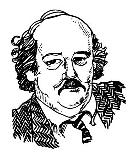(Syndicated to Kansas newspapers April 15, 2013)
Will the utopia be in view?
 Not sure whether it’s going to be one of those “the lion and the lamb shall lay down together” moments, but Friday, we’ll learn whether the massive tax cuts, and the political/economic concept behind them, appear to be moving Kansas toward an economic utopia.
Not sure whether it’s going to be one of those “the lion and the lamb shall lay down together” moments, but Friday, we’ll learn whether the massive tax cuts, and the political/economic concept behind them, appear to be moving Kansas toward an economic utopia.
There won’t be any lions or lambs present when the state’s Consensus Revenue Estimating Group meets and makes its prediction of whether those tax cuts—bigger than the governor wanted and without the “pay fors” that he proposed—are working, or starting to work.
The results of that estimate will shape the negotiations on the budget for the state fiscal year that starts July 1.
The estimate is important because it is the first hands-on assessment of whether those tax cuts worked—whether they spurred economic activity, mostly reflected in sales and wage earners’ tax receipts. It doesn’t have to happen all at once, but evidence that the tax shift is starting to work is crucial.
A key is that Friday’s estimate comes after the first quarterly income tax payments—if there are any—by those who generally aren’t wage-earners; the folks who own more than 190,000 businesses that are now largely exempt from state income tax. Gov. Sam Brownback’s concept is that freed from that troublesome state income tax, small business owners will hire more workers, buy more equipment, firms will move to Kansas, and the economy will blossom.
That economic activity needs to spur payment of what Brownback followers call consumption taxes—sales tax, liquor tax, probably even cigarette taxes, anything that shows that Kansans have money to spend and are spending it in Kansas.
Upshot of that estimate of state revenues will be decisions on the state budget, what the state can afford to pay for, what needs to be cut, and most important, whether the Legislature needs to continue the three-year-old penny sales tax which brings more than $260 million a year into the state treasury.
The governor has said it may take a year or two for the business tax cuts to translate into increased economic activity and income for the state, and it well may…or not.
But it takes time, and the governor needs something to show for his efforts, and if the Consensus Revenue Estimating Group comes up with anything better than previous dire predictions of shrinking revenues—which translate into less money to spend on schools, on social programs, on safety and such—that’s a good thing for Brownback.
Now, that doesn’t mean that fitting state spending within expected revenues will be simple, or can be done with—or without—continuing the sales tax. But that estimate will set the tone for the budget/taxes roundup to the Legislature.
It looks interesting, and ought to tell us whether the tax cuts actually spurred the Kansas economy, or appear likely to.
Not sure the earth will shake Friday, or whether the lions will lie down with the lambs, or just sit down for a nice lamb dinner.
